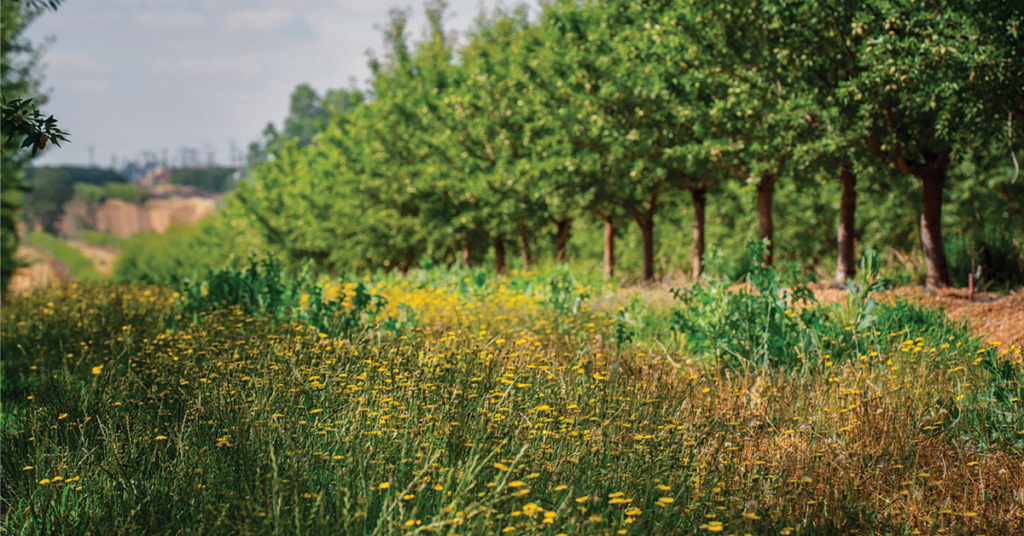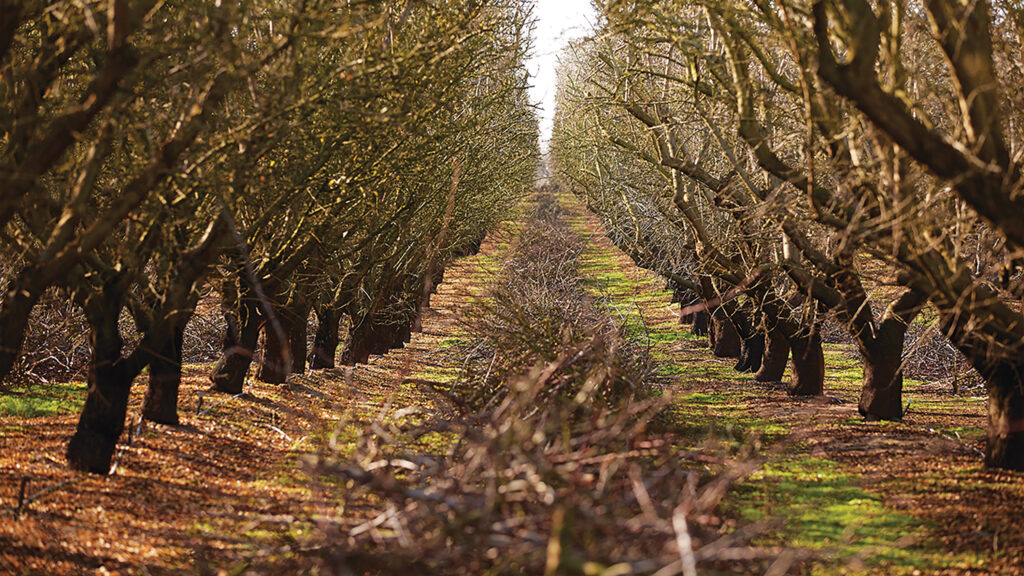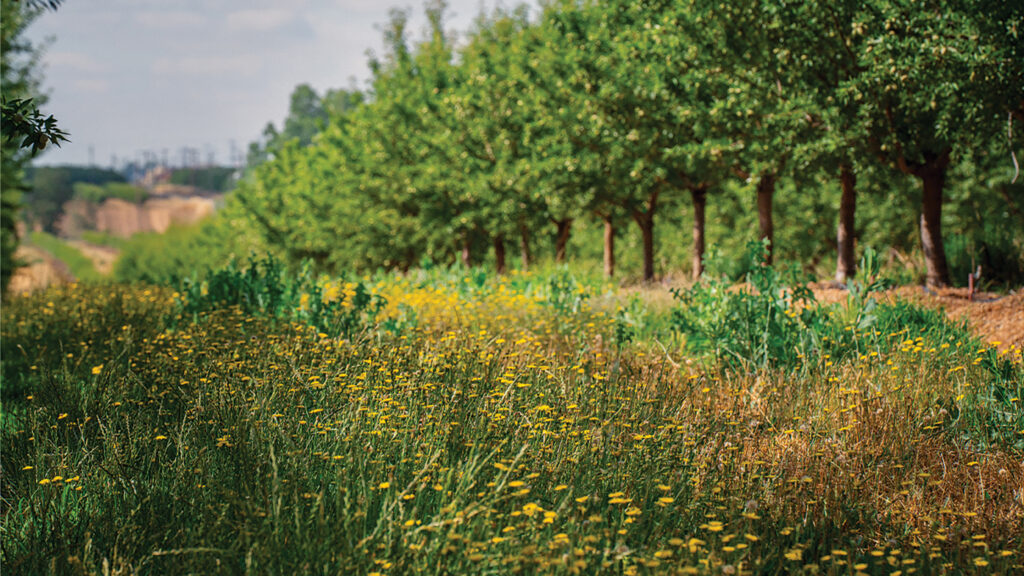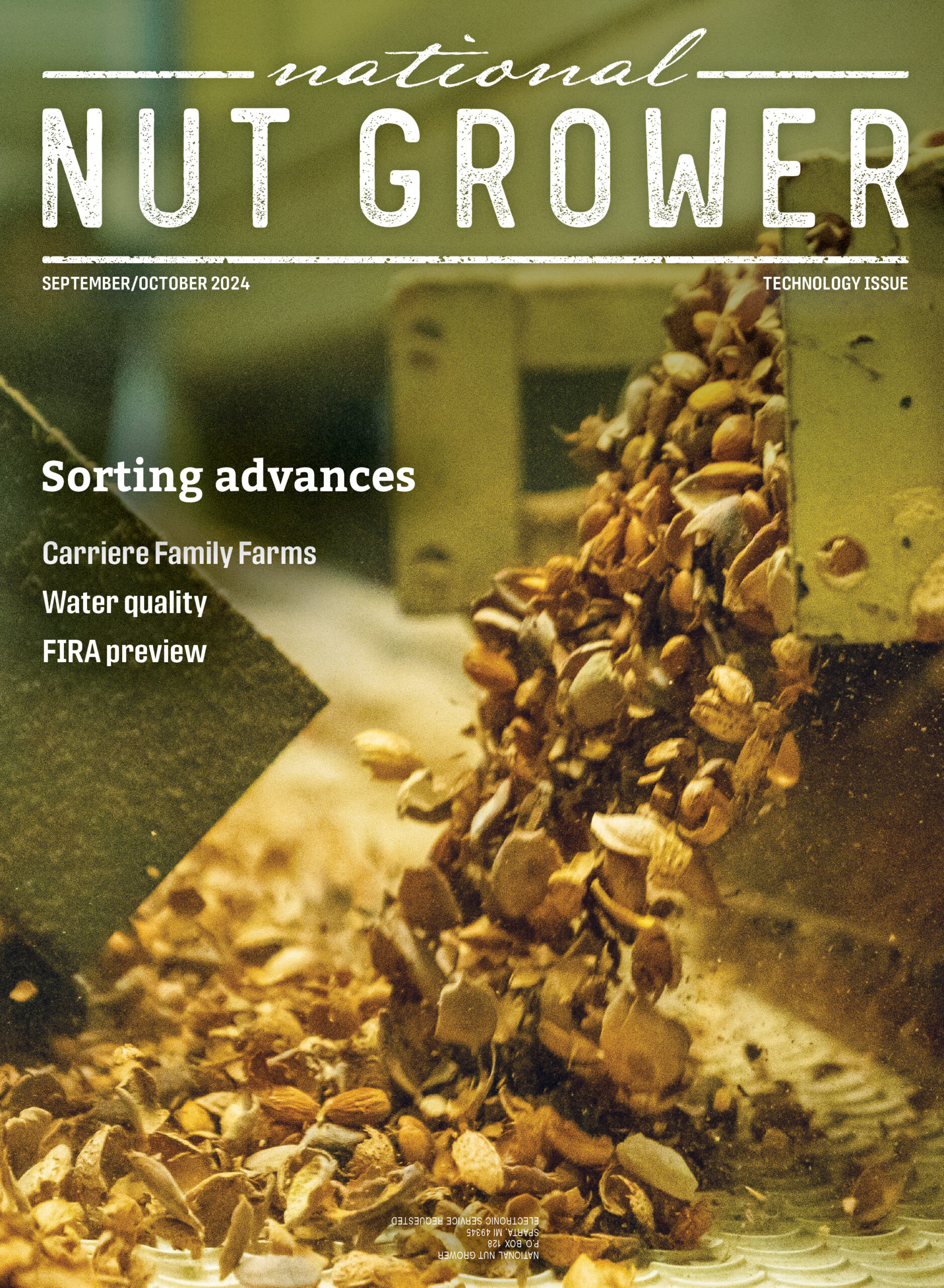
September/October 2024
Organic, climate-smart, regenerative: What’s the difference?
Organic, climate-smart, regenerative — these are terms now regularly heard in the agriculture industry, but do farmers actually know what they mean, how they work and the importance they have on an agricultural system?
More importantly, how can farmers be expected to implement these practices in their operations without fully knowing what each entails, economically and agronomically?

Though often grouped together, Amelie Gaudin, associate professor in the Department of Plant Sciences at UC Davis, said that organic, climate-smart and regenerative systems can all be very different.
“These three concepts are not similar but there’s a lot of common ground,” she said.
The common ground mentioned by Gaudin is that they each support the almond industry’s initiative to be more sustainable, with the intent to look beyond yield numbers and focus more on a systems-based approach.
While the end goal is similar, “Organic, climate-smart and regenerative concepts fall along a continuum of practices we can implement to transition into a more sustainable system,” she added.
The three concepts differ in the framework used to reach sustainability goals and in the degree of system redesign and consideration of ecological and social outcomes. Common examples familiar to almond growers include water use efficiency and nitrogen and fertilizer management, which often rely on input substitution and precision agriculture.
There’s no doubt almond growers have an economic incentive to improve efficiencies and become more sustainable, but often it’s challenging for farmers to fully commit to more ecologically intensive organic, climate- smart or regenerative practices when they aren’t sure how to quantify their return on investment. Below are key definitions and characteristics outlined by Gaudin to help understand the scope and goals of each approach.
Organic
Out of the three concepts, organic is considered the most widely understood because a certification process has been in place for decades. Originating from a farmer- led movement in the 1970s, organic farming focuses
on ecological farming practices and techniques such as natural fertilizers and eco-friendly pest control.
An operation seeking organic status must implement these approved practices over the course of three years before being certified by the United States Department of Agriculture (USDA) and California Certified Organic Farmers (CCOF).

Being the oldest of the three terms, today’s organic farming community has built many successful system designs with established market channels, and growers often receive a premium for their organic goods.
Climate-smart
Climate-smart on the other hand, is a newer term developed primarily by policymakers to more explicitly improve climate change adaptation and mitigation potential. The intent of climate-smart agriculture is to prioritize gains in efficiency while also substituting inputs and diversifying both conventional and organic systems.
When using this term, the goal of policymakers is to emphasize practices which provide solutions for climate issues, especially as it relates to greenhouse gas reductions.
Regenerative
Regenerative encompasses a redesign of the farming system and stacks multiple sustainability practices together. To be truly regenerative, systems must implement a wide array of ecological practices, use no synthetic input and re-integrate livestock. Unlike the other two terms, it has an equity and social justice element.
While an entry level regenerative system is designed to primarily build soil health, cycle, and sequester carbon, a deeper regenerative system also optimizes for biodiversity and conservation. The deepest level of regenerative supports individuals and communities, strives for equity and reverses decades of extractions.

Though regenerative is the newest buzzword these days, Gaudin said it’s also the most prone to being falsely promoted as a marketing tactic.
“Regenerative agriculture is emerging globally right now, but we need to be careful about greenwashing and missing an opportunity to build on this momentum to truly transform the way we are producing almonds while targeting drivers of ecosystem decline” she said.
Where’s the value for farmers
While all farmers strive to be good stewards of their land, it’s important to also convey the value these practices have to production agriculture. To that, Gaudin said we need to move beyond definitions and focus on current knowledge.
“Whether you’re talking about organic, climate-smart or regenerative, those systems must rely on biodiversity to be effective in shifting the narrative and outcome,” she said.
Gaudin explained that this can mean biodiversity in time and space, or above and below ground along with strategies that limit disturbances — an area almonds are already succeeding in.
Almonds have an advantage being a perennial, no-till crop, with multiple methods of cover cropping and several choices of species.
“This is where almonds can win,” she said. “We don’t till the soil much, and there’s a winter period where we can diversify the alleys and borders and effectively stack many basic principles of regenerative systems with low potential yield lag.”
Gaudin added that even with sustainability costs, almonds, on average, have
remained a high value crop with lower implementation challenges compared to annual crops.
Real life practices that make a difference
It’s clear that the push to be more sustainable in agriculture is not going away and growers must learn to adapt to keep up with the times. If you’re wondering where to start, below are a few realistic options with proven success in the almond industry.
Whole orchard recycling
Whole orchard recycling was created as an alternative to burning when an almond orchard has reached the end of its productive life cycle. It has become highly encouraged among the industry as a way to increase water efficiency and boost the overall health of your next planting.
“What we’ve learned is after nine years of recycling your orchard compared to burning your residues, you’re going to have a greater water-holding capacity,” Gaudin shared.
“We’re talking an estimated 32% increase in field capacity.” Tanya Gemperle Goncalves, an almond grower for Gemperle Farms, can attest to this, adding that this past winter marked their seventh cycle of whole orchard recycling, and they’ve seen no negative effects on their new plantings.
Data also showed improved infiltration rate, reduced soil compaction, improved soil aggregation, reductions in nitrate leaching and 20% yield benefits under deficit irrigation.
Growers interested in implementing whole orchard recycling on their operation are encouraged to reference the Almond Board of California’s (ABC) Whole Orchard Recycling Guide (tinyurl.com/7wnajyck).
Composting of hulls and shells
Composting of hulls and shells is another way growers can realistically introduce a sustainable practice into their operation with tangible results including a boost in nitrogen, phosphorus and potassium.
“After two to three years, compared to unamended soil, you see the value of compost hulls and shell in terms of soil fertility,” Gaudin said.
Composting also promotes more biological activity in your soil and can even have a mulch effect on your soil. More details on composting can be found in ABC’s Nitrogen Best Management Practices Guide. (tinyurl.com/59yss6wa).
Winter planted cover crops
Lastly, a practice increasingly being adopted in the almond industry is winter planted cover crops. Gaudin said that after four years, cover crops can provide significant forage for pollinators, weed suppression and a reduction in spring emergence and navel orangeworm egg deposition. Other longstanding benefits can be found online in ABC’s Cover Crops Best Management Practices Guide.
Almond grower Zac Ellis added that after planting cover crops on his vast almond acreage, one of his recommendations is to treat cover crops as their own independent management unit instead of an add-on to the primary crop. The best results will come from a dedicated effort to these systems and continuous data collection to improve management.
A greater sustainability story
Farmers know these practices are beneficial for soil health, water, and the overall ecosystem, but there’s also a greater sustainability story present. These efforts help shift the way people think and talk about almond production
in California and shed a positive light on the good work of the almond growers, said Joe Gardiner of Gardiner Farms.
“Given the opportunity, every grower and processor should try to engage and educate because that has lasting power,” he concluded.







